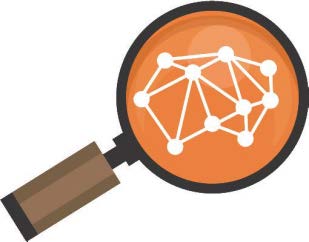How is new behavioral science being used to improve treatment of children and adults with ASD, promote business success, and potentially make the world a better place? All new behavioral science has been influenced by decades of research in evolutionary neurobiology. You might think of new behavioral science approaches as having the power to promote the complex processes of self-motivation and habit change. This is at the heart of the Mindful Occupational Therapy Approach (MOTA) to treating children and adults with ASD.1,4,5,6,7
New behavioral science tells us that few people perform well when performance is being graded. Few people learn difficult concepts in stressful environments. Few people respond well to mixed or conflicting messages. Few people feel comfortable with others who are perceived as "not like us". Adults and children with special needs deal with an amplified version of these instinctive, unconscious thoughts every day. Their interactions in the world have often taught them to feel different from others and the MOTA treatment protocol can help them feel more attuned and engaged with a wider variety of people and in a broader array of environments.1,4,5
New behavioral science has taught the world that the majority of everyone's daily decisions are made unconsciously, instinctively, and without rational thought. Business applications of this concept are being used in large corporations and organizations worldwide. Innovators in all areas from business to politics to health care, have applied this new science by realizing that the best teachers and team leaders use the power of positive interpersonal relationships. Likewise, they know the benefits of providing a relaxed learning environment when challenging others to move out of comfort zones or revise previous knowledge.1,4,5
NEW BEHAVIORAL SCIENCE INTERVENTION TECHNIQUES: NUDGING AND DEBIASING
Business leaders have developed two strategies for managing employee productivity that can be used to explain the science behind the MOTA. By considering therapeutic uses of two popular business management techniques called "nudging" and "debiasing", MOTA applications of the same behavioral science can be seen to have world-changing therapeutic power. One application of nudging within the context of business management was highlighted in a recent McKinsey & Company Podcast (February 2018) and involved altering the business environment to promote better safety consciousness among employees.1,4
The idea of color coding pharmaceuticals to reduce nursing staff errors is a health care system example of the nudging technique. Instead of altering the physical environment, the MOTA works by altering the social environment for a child or adult with ASD. A MOTA-trained practitioner uses therapeutic nudging as a gentle treatment approach that helps a child or adult with ASD become aware they have a choice to react in a less emotionallyreactive way. 1,4

Many children and adults with ASD receive occupational therapy because they have performance limitations due to instinctive fearbased responses. Sometimes these are due to irritating or extreme sensory inputs such as loud noises or unexpected touch. Other times, the client has been taught to exhibit these unconscious reactions through interpersonal or social dynamics. This is the case when a child or adult with ASD has learned to associate an event, person or physical space with previous unpleasant experiences and have developed negative approach or avoidance coping reactions. Examples of negative approach and avoidance coping reactions include, hitting a teacher who touches them unexpectedly or refusing to go to school because they are overwhelmed by the classroom noise. These fears might be considered irrational by some but, a MOTA-trained practitioner recognizes that fight-flight-freeze responses are habits that were developed early in life. Since they were based on immature or exceptional perceptions of reality, fight-flight-freeze responses may be thought of as a once rational decision that is no longer adaptive. 1,2, 4
A MOTA-trained practitioner can use therapeutic nudging to help a client become aware that they can react differently and then, to teach them how to develop a more positive and adaptive coping response. In this way, a MOTA-trained practitioner is promoting a therapeutic version of the second business technique derived from new behavioral science called debiasing. In the same McKinsey & Company Podcast, there was an example of a business management application of debiasing. In this case, a team leader was taught to introduce discussions while giving his or her opinion only after everyone else had a turn. This technique is used to avoid the instinctive fear of disagreeing with a manager or group leader. Debiasing may be thought of as a new behavioral science approach to reducing the instinctive fear-based reaction to power difference in a group. Innovators know the benefits of overcoming this instinctive reaction called the sunflower bias. This includes more open sharing, benefitting from diverse opinions, and increasing efficiency for reaching business goals. 1,2, 4
In the same way, a MOTA-trained practitioner can alter the therapeutic social environment for a child or adult with ASD by applying perceptual debiasing. Perceptual debiasing can be thought of as a process for gradually reducing fight-flight-freeze responses that are currently standing between a client and their treatment goals. Negative approach and avoidance coping responses are overcome by substituting positive ones. Examples of positive approach and avoidance coping responses in the above scenarios include, learning to politely ask a teacher to not touch them or learning to move to a relaxing multi-sensory space when overwhelmed by classroom noise. Therapeutic nudging supports habit change through perceptual debiasing by providing a just-right level of challenge. Regardless of who a MOTA-trained practitioner is working with, she or he will support their potential to change while that client maintains the stabilizing feeling of being in control. 1,2, 4
After meeting that challenge in a new and more emotionally selfregulated way, they are ready to practice their new skill and perform it with different people and in other environments. Therapeutic nudging has taught MOTA-trained practitioners that all people tend to react in defensive ways when a deeply engrained habit is challenged. This means that sometimes it is the child or adult with ASD who needs to change, sometimes it is something about their environment, and sometimes it is the other person or people in the room. This explains why new behavioral science can be used to unify people and groups. 1, 4
New behavioral science recognizes the unconscious patterns we all share and how our instincts influence daily decisions. This science is true when a child with autism is asked to perform a skill they have avoided due to anxiety and sensory sensitivity but, it is also true when a group of bullies habitually pick on a smaller child or when an employee who disagrees with their boss is reactively fired. By applying the MOTA, these situations can be handled in more emotionally self-regulated ways whether a therapist is working with a client with ASD, providing classroom consultation or completing a workplace training event. 1,4
The importance of gradually increasing environmental stress is a noteworthy aspect of any therapeutic process applying new behavioral science. This science recognizes that defensive reactions are instinctive responses to stress and may only be triggered in specific environments and with certain people. The time involved in overcoming defensive reactions can best be illustrated by describing the MOTA course of treatment. 1,4

Phase I: Nudging and Debiasing in Treatment Environments: One therapeutic tool that supports client behavior change is for the practitioner to begin by working with the client in a personallypreferred multi-sensory environment. These are designed for a client by observing their behavior in a neutral environment and then making subtly more or less challenging adjustments that are based on those observations. Sometimes a client needs relaxing visual and auditory effects while other times they need more novelty to stimulate engagement. They may also need adaptations to the environment that allow them to learn from it and develop a new pattern of behavior. An example of this is a child with ASD who needs to learn how to stay focused on playing a game with a parent or friend while there are distractions in the room. 1,2, 3, 4
Phase II: Nudging and Debiasing in Community Environments: After a child or adult with ASD has changed a habit consistently within a personally-preferred therapeutic environment, he or she is ready to be challenged in natural envi ronments within their community. Personal history and interests are a key here as they enter and engage with familiar environments in a more emotionally self-regulated way. Depending on the client's prior history and interests, this may be as simple as a trip to their local grocery store, as meaningful as attending their family's place of worship or as challenging as going to their town's noisy skating rink. An example of this can be seen when that same child with ASD learns to stay seated during loud music in their family's place of worship using noise cancelling headphones. 1,2, 3, 4
Phase III: Nudging and Debiasing in Stressful Environments: After a child or adult with ASD has changed a habit consistently within natural environments in their community, she or he is ready to be challenged in more stressful environments. A sensory history and environmental preference assessment is important at this stage as the client expands beyond current comfort zones into environments that have historically led to melt-down or other extreme reactions. Depending on a client's prior history and interests, this may be as mundane as school transitions during a fire drill or as novel as navigating an unfamiliar area using their I-Phone and Google Maps. An example of this phase of treatment is an adolescent with ASD learning to take those same noise cancelling headphones in a backpack to a previously avoided school dance in case they are needed. 1,2, 3, 4
RESPONDING TO A WORLD-CHANGING SHIFT IN BEHAVIORAL SCIENCE
Why is the same science that is enhancing treatment of children and adults with autism potentially world-changing? First, this approach can be used in treatment of any condition characterized by defensive reactions that are commonly referred to as emotional triggers or fight-flight-freeze responses. This means it is useful with clients who have PTSD, dementia, intellectual or developmental disabilities, a variety of mental health conditions, and even a team of people dealing with workplace stress. Second, since this is a natural approach, it can be used as an effective alternative or supplement to pharmaceuticals. Third, since this approach recognizes that behavior patterns do not change quickly and must be approached with a mindful, structured, and person-centered plan over time, it is promising for reducing the later secondary effects of childhood trauma, social isolation, or mental illness. This positive approach is within the scope of a much-needed preventative mental healthcare model. Fourth, since this new behavioral science approach recognizes that none of us are without instinctive reactions when our ideas or safety are challenged, applications of the MOTA are endless and include a wide variety of treatment, team leadership, community development, and peace-building possibilities. Let there be peace on earth and let it begin with the exceptional parents of exceptional children and adults with ASD. 1,2, 3, 4 •